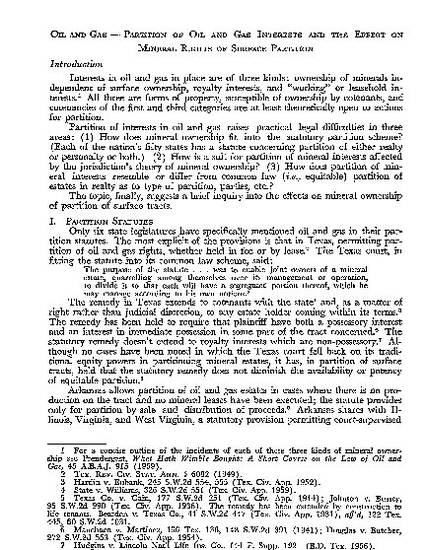
Interests in oil and gas in place are of three kinds: ownership of minerals independent of surface ownership, royalty interests, and "working" or leasehold interests. All three are forms of property, susceptible of ownership by cotenants, and cotenancies of the first and third categories are at least theoretically open to actions for partition.
Partition of interests in oil and gas raises practical legal difficulties in three areas: (1) How does mineral ownership fit into the statutory partition scheme? (Each of the nation's fifty states has a statute concerning partition of either realty or personalty or both.) (2) How is a suit for partition of mineral interests affected by the jurisdiction's theory of mineral ownership? (3) How does partition of mineral interests resemble or differ from common law (i.e., equitable) partition of estates in realty as to type of partition, parties, etc.?
The topic, finally, suggests a brief inquiry into the effects on mineral ownership of partition of surface tracts.
Available at: http://works.bepress.com/thomas_shaffer/108/

Reprinted with permission of Notre Dame Law Review (previously Notre Dame Lawyer).